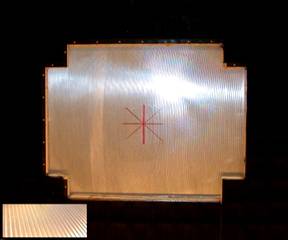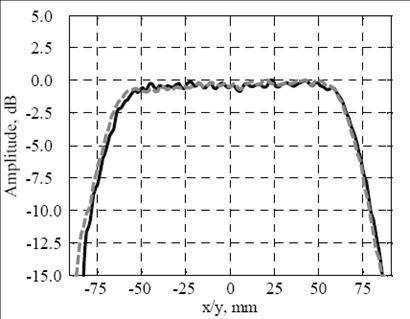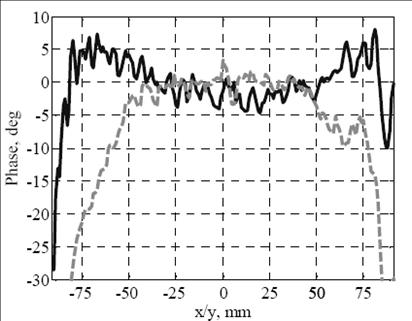Reflection-Type Phase Hologram for Beam Shaping
Computer-generated holograms are suitable for beam forming. With a hologram it is possible to, e.g., transform a Gaussian beam in to a planar wave. Holograms are found to be especially suitable in compact antenna test ranges (CATR) and in radar cross section (RCS) measurements. A hologram is not only suitable for plane wave generation – more complex application-specific beam forms are also possible. Holograms can be based on modulation of amplitude or phase of the incoming wave. Also, both reflection and transmission type geometry is possible. The reflection-type phase hologram has the highest efficiency and the smallest losses due to the phase modulation and to the wave propagating only in a low-loss medium.
A reflection-type phase hologram, designed to generate a 100-mm planar field region, quiet zone (QZ), at 310 GHz with vertical polarization was manufactured and tested. The hologram is made by milling a groove pattern on an aluminium plate (see figure below). The design parameters are the groove width, depth, and spacing. In order to evaluate the quiet zone, the amplitude and phase patterns created by the hologram were measured. Both co-polar and cross-polar patterns were measured at the vertical polarization and the performance of the hologram was tested also at the horizontal polarization. With the vertical polarization, the results show amplitude and phase peak-to-peak ripple of 0.5 dB and 15o, respectively, while the cross-polar level is about −39 dB. With the horizontal polarization, the quality of the quiet zone is degraded due to the resonance-like phenomena affecting both the amplitude and phase pattern of the hologram.

Figure 1. A reflection-type phase hologram. The hologram consists of a groove pattern (in the inset) milled on an aluminium plate. The pattern has dimensions of 23 x 20 cm2. The dimensions (depth, width) are of the order of wavelength. The hologram pattern is surrounded with absorber.
 |
 |
Figure 2. The measured quiet-zone field at 310 GHz. Amplitude and phase (solid black line denotes x-direction and grey dashed line denotes y-direction).
Contact person: Juha Ala-Laurinaho


